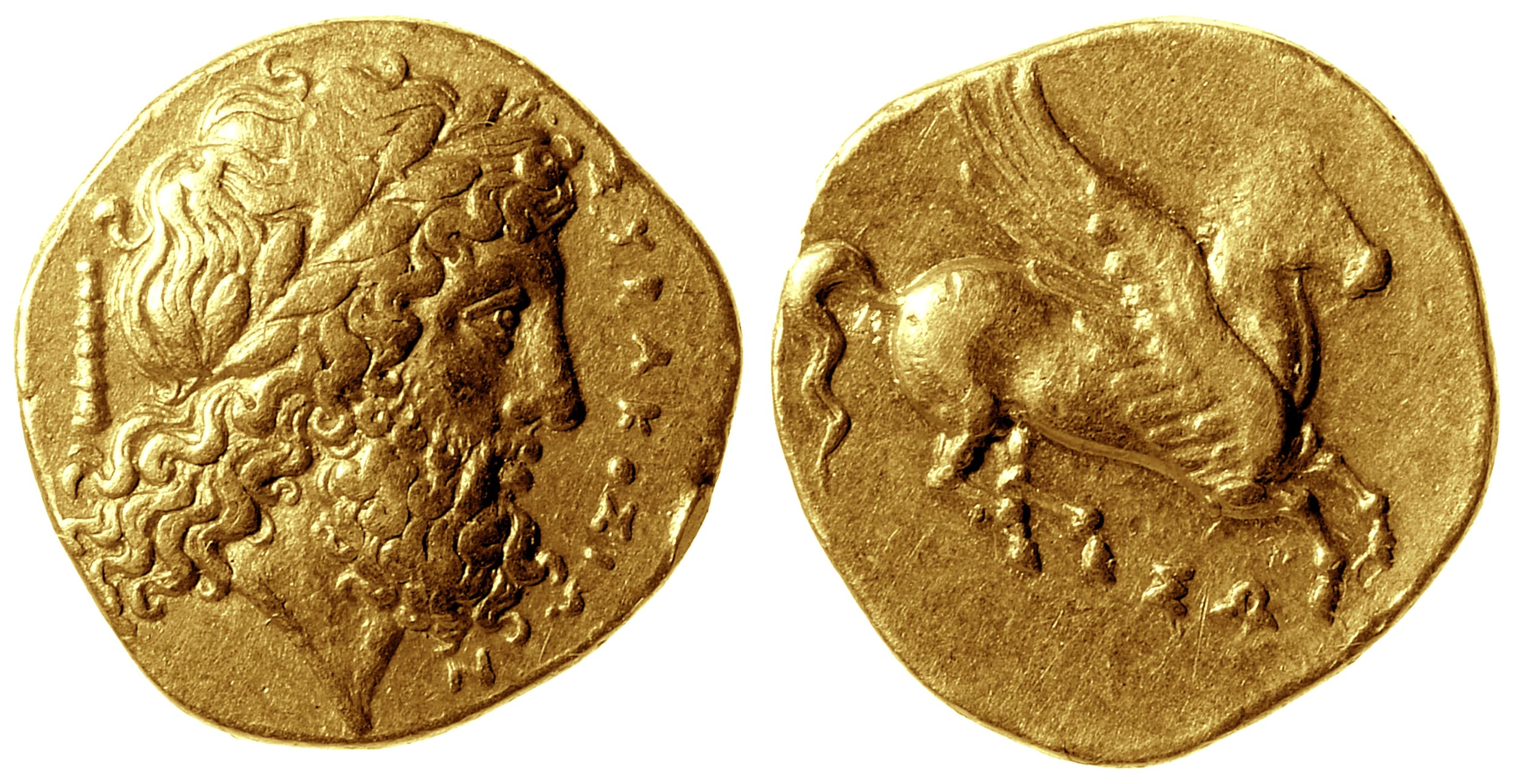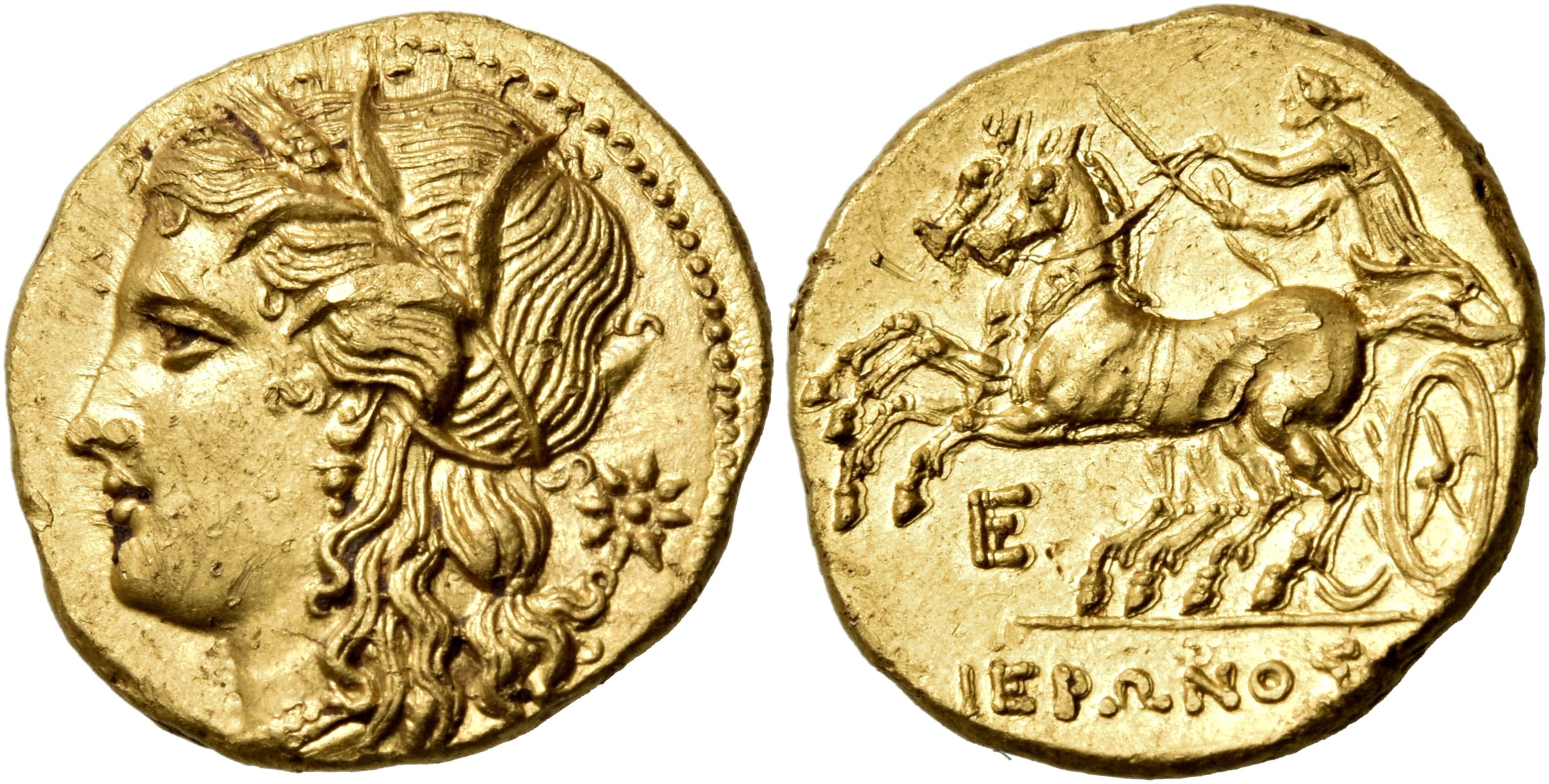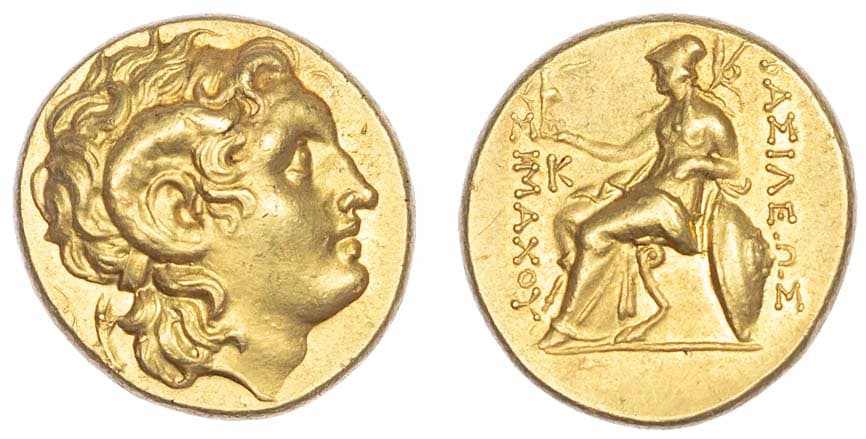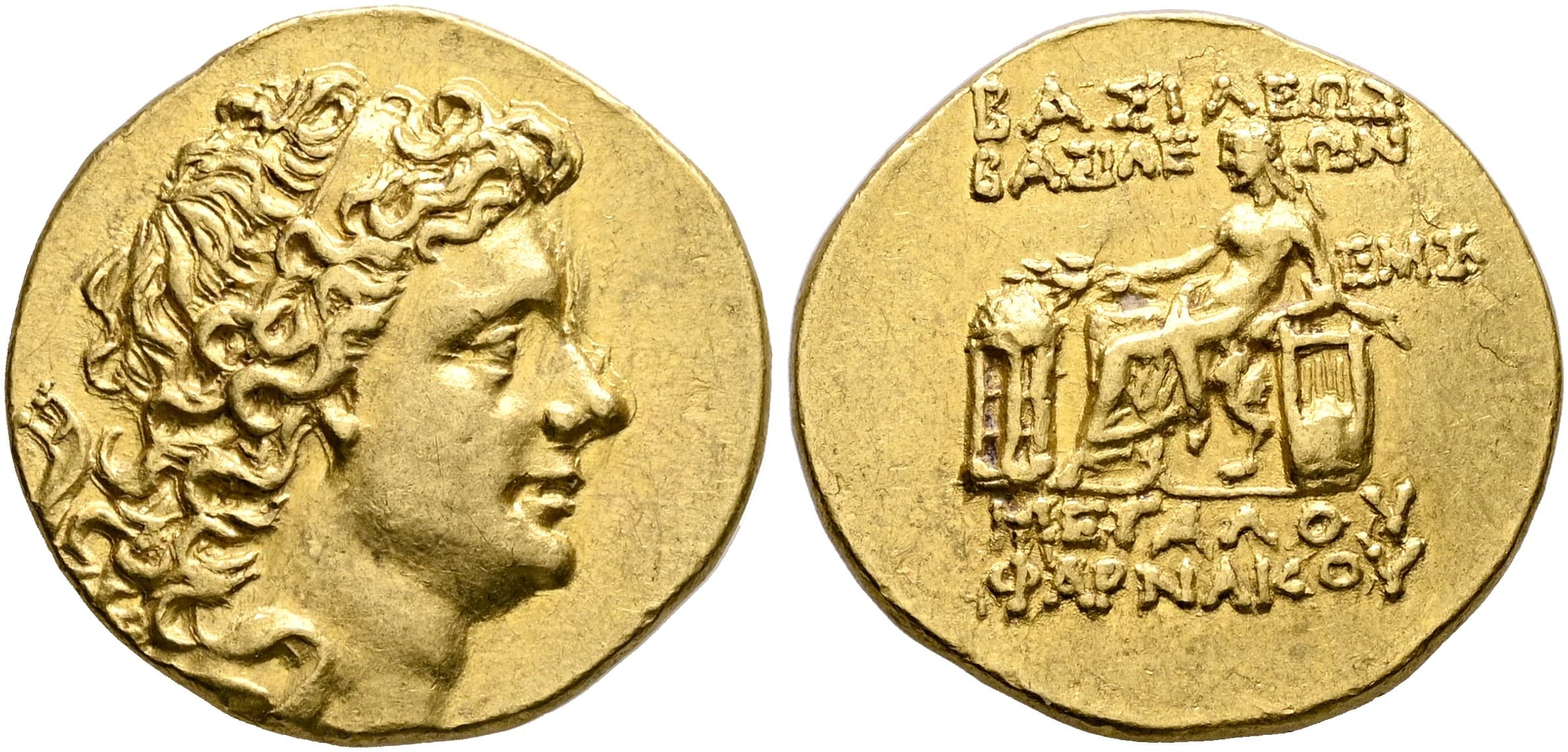5 Rare Ancient Gold Coins of Greek Gods
Ancient Greeks made gold coins not just to use as money, but also as tributes to their gods and goddesses. These five rare coins are known for their beautiful designs and the powerful deities they honor. From Zeus to Artemis, the goddess of the hunt, each coin tells a story and shows the incredible skill of ancient artists.
Gold Coin of Syracuse (c. 345-317 BCE)
Image: Obverse shows head of Zeus; reverse shows Pegasos flying.This rare gold coin of Syracuse was struck in Sicily between 345 and 317 BCE, during the late Classical period of Magna Graecia.
On the obverse, the bearded head of Zeus, crowned with a laurel diadem, a symbol of divine protection and power.
The reverse depicts Pegasos, the winged horse of myth, often associated with Corinthian tradition, reflects the city's cultural and mythological connections.
Examples of this gold issue are rare, and surviving specimens are highly sought after by collectors. One of the finest examples resides in the British Museum's collection, where it is catalogued as a key highlight of Magna Graecia gold coinage.
Gold Decadrachm of Syracuse (c. 220-217 BCE)
Image: Obverse shows the head of Persephone; reverse bears the legend ΙΕΡΩΝΟΣ and a charioteer driving a biga.The Gold Decadrachm of Syracuse was struck under King Hieron II around 220-217 BCE, during the Hellenistic era when Syracuse flourished as a major Mediterranean power.
On the obverse, the goddess Persephone is depicted in profile facing left, her hair long and flowing beneath a wreath, with a delicate pendant earring and pearl necklace highlighting her divine status. Behind her neck, you can spot an eight-rayed star, a common symbol of celestial favor and renewal in Hellenistic art.
The reverse bears the inscription ΙΕΡΩΝΟΣ (Hieron's name) above a biga (two-horse chariot) driven vigorously to the left. The charioteer holds a sharp kentron (driving goad) in his right hand and the reins in his left, with the monogram “ΑΓ” tucked beneath the horses' hooves to identify the magistrate or workshop.
Gold dekadrachms of Hieron II are exceedingly rare and were likely used for high-level payments or diplomatic gifts rather than everyday commerce.
Gold Stater of Tarentum (c. 325 BCE)
Image: Obverse shows the head of Hera facing right; Reverse features Poseidon seated left.The Tarentine Gold Stater, struck around 325 BCE in the powerful Greek city of Tarentum (modern-day Taranto in southern Italy), is a rare and elegant example of ancient Italic coinage. Its obverse features a serene and veiled portrait of the goddess Hera, queen of the Olympian gods, adorned with a delicate diadem, necklace, and earring, symbols of divine authority and protection. A dolphin swims beneath her chin, possibly referencing the city's maritime identity.
On the reverse, the god Poseidon is shown seated to the left, leaning forward and holding his trident with a relaxed, commanding presence. Before him stands the youthful figure of Taras, founder and namesake of the city, shown raising his hands in respectful supplication. This intimate scene evokes themes of divine favor, civic identity, and spiritual protection for Tarentum's people.
The surrounding symbols, including a star and inscriptions in Greek, add layers of meaning, indicating both celestial blessing and local governance. The dolphin and sea imagery, subtle but recurring across Tarentine coinage, reflect the city's deep reliance on maritime trade and naval strength.
Today, this gold stater is celebrated not only for its artistry and technical refinement but also as a vivid window into the religious and civic ideals of Magna Graecia during its golden age. Its blend of powerful symbolism and Hellenic craftsmanship continues to fascinate collectors and historians.
Gold Stater of Lysimachos (c. 323-281 BCE)
Image: Obverse shows Alexander the Great; Reverse depicts Athena seated left, with small letter 'K' on the coin, which was used to identify the official or workshop that made it.The Gold Stater of Lysimachos was issued by Lysimachos, one of Alexander the Great's successor kings, around 323-281 BCE. Struck in the Kingdom of Thrace (exact mint uncertain), this coin exemplifies the power and prestige of Hellenistic rulers who claimed Alexander's legacy. It was a high-value piece intended for large payments, military stipends, or diplomatic gifts.
On the obverse, the coin presents a finely detailed, diademed head of the deified Alexander the Great, facing right and adorned with the horn of Ammon, a symbol of divine kingship and a reminder of Alexander's own association with the god Zeus-Ammon. The portrait emphasizes Lysimachos's legitimacy by linking him directly to Alexander's divine status.
The reverse features the goddess Athena seated left on a throne, holding the winged figure of Nike in her right hand while her left arm rests on a shield decorated with the Gorgoneion (Medusa's head). A spear stands behind her, and the control mark “K” appears in the field, identifying the magistrate or workshop responsible for the issue. This scene underscores Athena's roles as protector of cities and patron of warfare and wisdom.
Gold staters of Lysimachos are exceptionally rare and prized by collectors for their artistic quality and historical significance.
Gold Stater of Pharnakes II (c. 53 BCE)
Image: Obverse shows diademed bust of Pharnakes II; Reverse features Apollo seated on a throne.This rare Gold Stater was minted around 53 BCE under Pharnakes II, ruler of the Bosporan Kingdom and son of the legendary King Mithridates VI of Pontus. The coin was struck at Panticapaeum (modern-day Kerch, Ukraine), the cultural and economic heart of the kingdom.
On the obverse is a portrait of Pharnakes II himself, shown wearing a royal diadem. His features reflect the strong Mithradatic lineage, confident, classical, and carefully idealized in the Hellenistic style. The reverse depicts the god Apollo seated to the left, extending a laurel branch and resting his arm on a lyre (kithara), with a tripod beside him, symbols of music, divination, and harmony.
Pharnakes ruled as a Roman client king after the fall of his father, but later rebelled in a bold campaign to reclaim Pontus. He was famously defeated by Julius Caesar at the Battle of Zela in 47 BCE, prompting Caesar's iconic phrase: “Veni, vidi, vici” (“I came, I saw, I conquered”).
This coin stands at the intersection of Roman, Greek, and Pontic legacies. Well-preserved examples are exceptionally rare and highly sought after by collectors.




